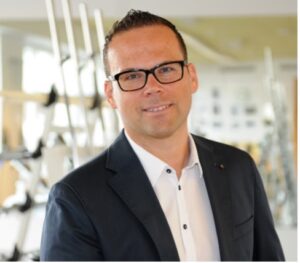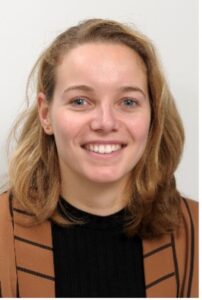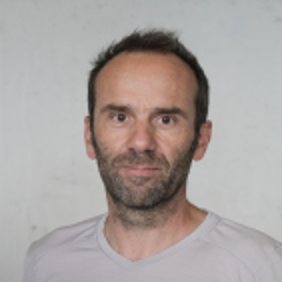Kirsten Kiers, Josef Kröll, Gerald Mitterbauer, Johannes Scherr, Jörg Spörri. Experts’ perceptions on key injury risk factors in alpine ski racing as a function of stakeholder role and associated level of competition. BMJ Open Sport & Exercise Medicine 2021;7(3):e001111. doi: 10.1136/bmjsem-2021-001111.
You can find the full paper here
Tell us more about yourself and the author team.
I am currently working as the Head of Sports Medical Research at the Balgrist University Hospital (University of Zurich). My research focuses on preventing and rehabilitating sports injuries, emphasising epidemiology, load management, movement biomechanics, musculoskeletal imaging, & exercise physiology. I have the background of a former competitive alpine skier, and I am a member of the FIS ISPP working group on Alpine Skiing Injuries.

The study’s authors were completed by Ms Kirsten Kiers, PD Dr Josef Kröll, Mr Gerald Rainer-Mitterbauer, and Prof. Johannes Scherr.
Kirsten Kiers is a physician from Utrecht (NED) who joined our group for an 8-month research fellowship. She is a talented and enthusiastic young clinician with a former background in team sports (Handball).

Josef Kröll worked as an Associate Professor at the Department of Sport Science and Kinesiology of the University of Salzburg and is now Head of Sports Infrastructure of the University and State Sports Centre (ULSZ) Salzburg/Rif and Leader of Scientific Projects at the Olympic Centre Salzburg/Rif. He is also a former member of the FIS ISPP working group on Alpine Skiing Injuries.

Gerald Rainer-Mitterbauer is a dedicated sports physiotherapist focusing on rehab and prevention management who has been supporting various national teams in alpine ski racing. He has been involved in the course development of various educational programs in sports physiotherapy. Moreover, he is currently a member of the FIS ISPP process management and working group on Alpine Skiing Injuries.

Johannes Scherr is Chief Physician and Head of the University Centre for Prevention and Sports Medicine at the Balgrist University Hospital (University of Zurich). He holds an Extraordinary Professorship at TU Munich (Chair of Preventive and Rehabilitative Sports Medicine, Klinikum rechts der Isar). He is a former Olympic physician (2010 – 2018) of the German Olympic Sports Confederation (DOSB) and was, from 2015, 2019, Deputy Chief Physician of the German Ski Association (DSV).

What is the story behind your study?
The International Ski Federation (FIS) has recently launched a long-term project: the ‘FIS Injury Surveillance and Prevention Programme’ (ISPP) to prevent and reduce the number of injuries. Under FIS ISPP, a group of experts, the ‘Alpine Injury Prevention Working Group’ is working to identify the most important injury hot-spots through methodical injury surveillance and evaluation to propose effective solutions and projects for implementation. To give voice to all relevant stakeholders and as a foundation for prioritizing the FIS ISPP work agenda, the current study was designed to understand alpine ski racing stakeholders’ perceptions on key injury risk factors and potential countermeasures. The comprehensive list of perceived risk factors and suggested countermeasures provided as online supplemental file 2 may equally serve both researchers and practitioners as sources of inspiration for their prevention efforts.
In your own words, what did you find?
Compared to a previous study conducted by our group in 2010, it appears that expert stakeholders’ perceptions on key injury risk factor categories have changed over the past decade. Overall, snow-related factors seemed to have the highest priority among all risk factors explored. Ten years ago, the perceived focus of stakeholders tended to be on equipment-related risk factors and, in particular, the “ski, plate, binding, boot system”.
In addition, our study demonstrated that expert stakeholders’ perceptions on key injury risk factor categories in alpine ski racing depend on their role and differ between the competition levels (World Cup, European Cup, and FIS-race). In addition to snow-related factors, World Cup athletes’ and coaches’ perceptions of equipment, while at the European Cup and FIS-race level fatigue and physical fitness-related factors were considered important. Athletes’ perceptions mainly agreed with the Ski Racing Suppliers (i.e., snow-related and equipment-related factors). At the same time, coaches, team medical staff and FIS representatives additionally emphasised fatigue and physical fitness-related factors.
What was the main challenge you faced in your study?
Our biggest challenge was to recruit a representative and well-balanced cohort of expert stakeholders. As the alpine ski racing community is a close-knit (usually nationally organized) group of stakeholders that travels around the world together, there is some risk that they will answer questions similarly or in a way that they believe will be accepted and liked by their peers (social desirability bias). We, therefore, placed a lot of emphasis on surveying experts from as many different regions & nations as possible (28 countries in total).
If there is one take-home message from your study, what would that be?
Experts’ perceptions on key injury risk factors in alpine ski racing depend on the stakeholder role and differ between the competition levels. Thus, to develop effective prevention measures and successfully implement them, all relevant stakeholders should be given a voice, and prevention efforts should be targeted to the specific level.